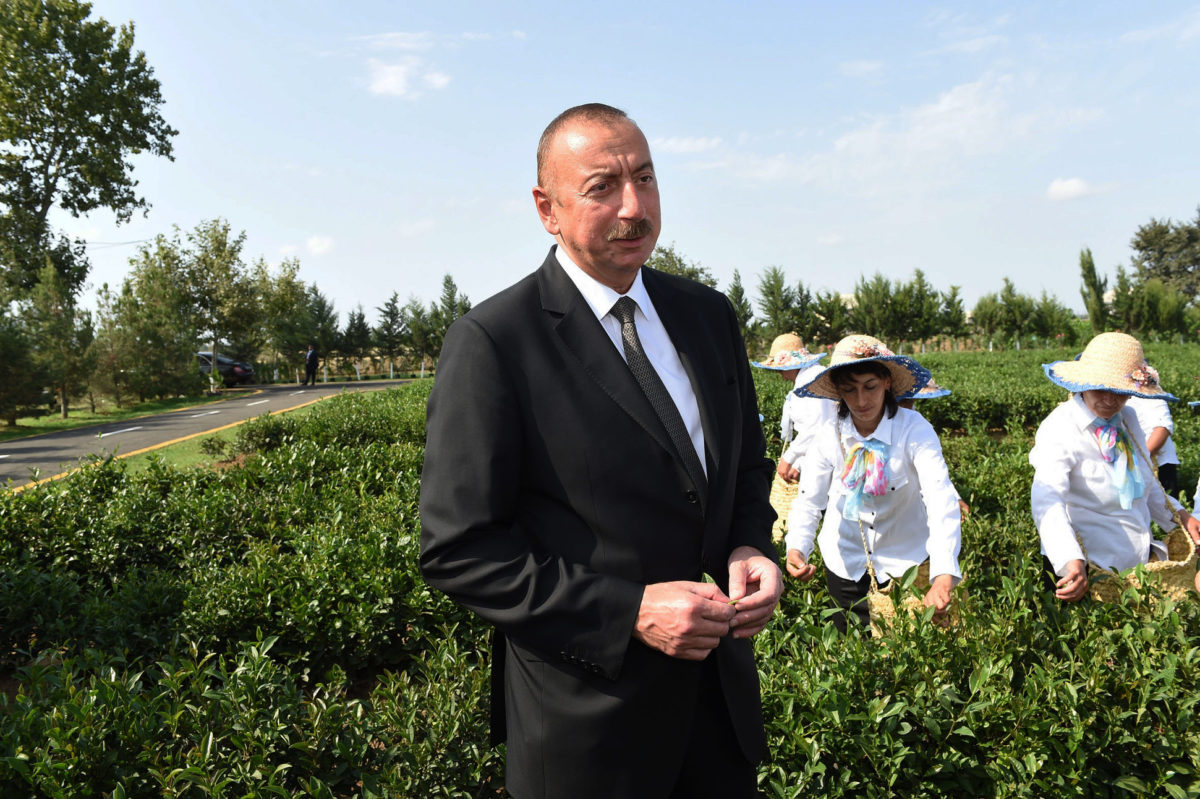
Azerbaijan Growers are Restoring its Tea Legacy
By Mainbayar Badarch
Azerbaijan is famous not only for premium black tea varieties but also for green teas, once supplying large quantities to the Soviet Union and countries surrounding the Black Sea. Since the 1990s, the nation’s tea fields and production have gradually declined. Plantation land under tea fell to 587 hectares and crop production declined to 545 tons in 2010.
The state soon after enacted incentives for tea producers and the area under tea increased by two times to 1,114 hectares. Tea production increased by 42% to 775 tons. During the past five years, the area under tea has further expanded to 13,400 hectares, and the production of green tea leaves has reached 34,500 tons.
During this time the construction of 14 tea leaf processing enterprises and two tea distilleries in the country has enabled the processing of 45,000 tons of tea leaves per year, ensuring that 65-70% of the population’s need for dry tea is met by local growers.
Current production and policy support
The tea was first planted in Azerbaijan in the late 19th century. The cultivation of tea on a scientific basis began in 1929. The establishment of commercial plantations began in 1932, building the first tea factory in 1937 in Lankaran economic region, bordered by Iran. A cropland survey of conditions identified 21,000 hectares of land in the country as well suited to tea, mainly Lankaran, and the current condition of the lands allows the tea cultivation.
Lankaran currently produces 95% of the country’s tea crop due to favorable weather conditions. In 2020, the country’s sown area under tea was 1,067 hectares areas, consisting of the Lankaran-Astara region’s 1,007 hectares and Shaki-Zagatala’s 60 hectares, according to the State Statistical Committee. All categories of farms harvested 930 metric tons of tea, followed by private owners, family peasant farms, households 63 tons, and agricultural enterprises with 30 tons.
Regarding yield, private owners, family peasant farms, and households led by 21.3 quintal/ha, followed by all categories of farms (15) and agricultural enterprises (9.2). The same year’s green tea leaves production totaled 932 tons, of which 876 tons were attributed to Lankaran.
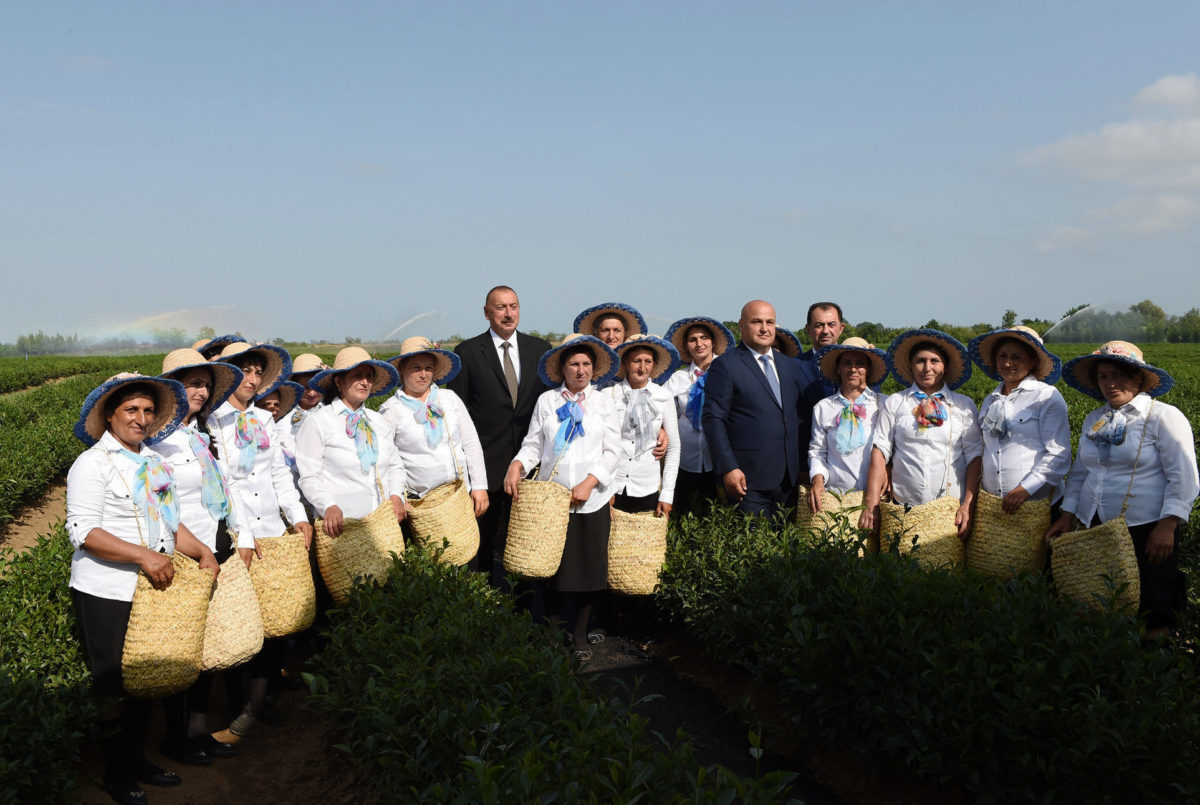
Azerbaijan enacted a “Tea Law” in December 2002, principally to provide incentives for tea growing, create economic and legal guarantees to safeguard against unfair competition, and meet international standards.
A State program on the development of tea growing for 2018-2027 was approved by the Presidential decree in February 2018 to develop tea production and increase the export potential of the industry.
The program aims to stimulate the development of tea growth to meet the demand for dry tea in the country mainly through local products, improve the supply of raw materials for tea processing enterprises, develop the processing industry, and increase employment as tea exports increase.
As a result of the program’s implementation, it is planned to grow the tea area to 3,000 hectares and collect green tea leaves to 8,500 tons by 2027.
Export markets and the impact of war
In 2021, Azerbaijan exported 1,115 tons of packaged tea worth $8.5 million while importing 13,965 tons of tea worth $62 million. In the first two months of 2022, the country exported 110 tons of tea worth $892,000 and imported 1,745 tons of tea worth $8.4 million.
Azerçay is exported primarily to Russia, and other major markets, Georgia, Ukraine, and Kazakhstan, although it is produced mainly for internal consumption. Over the last seven years, 750 tons of tea have been shipped annually to Russia. Export to Russia has been declining significantly since 2011, and a record low of 337 tons of tea was exported in 2020. The same year, Georgia led the export market for the first time, having 47% market share, followed by Russia (25%), Ukraine (18%), and Saudi Arabia (3%).
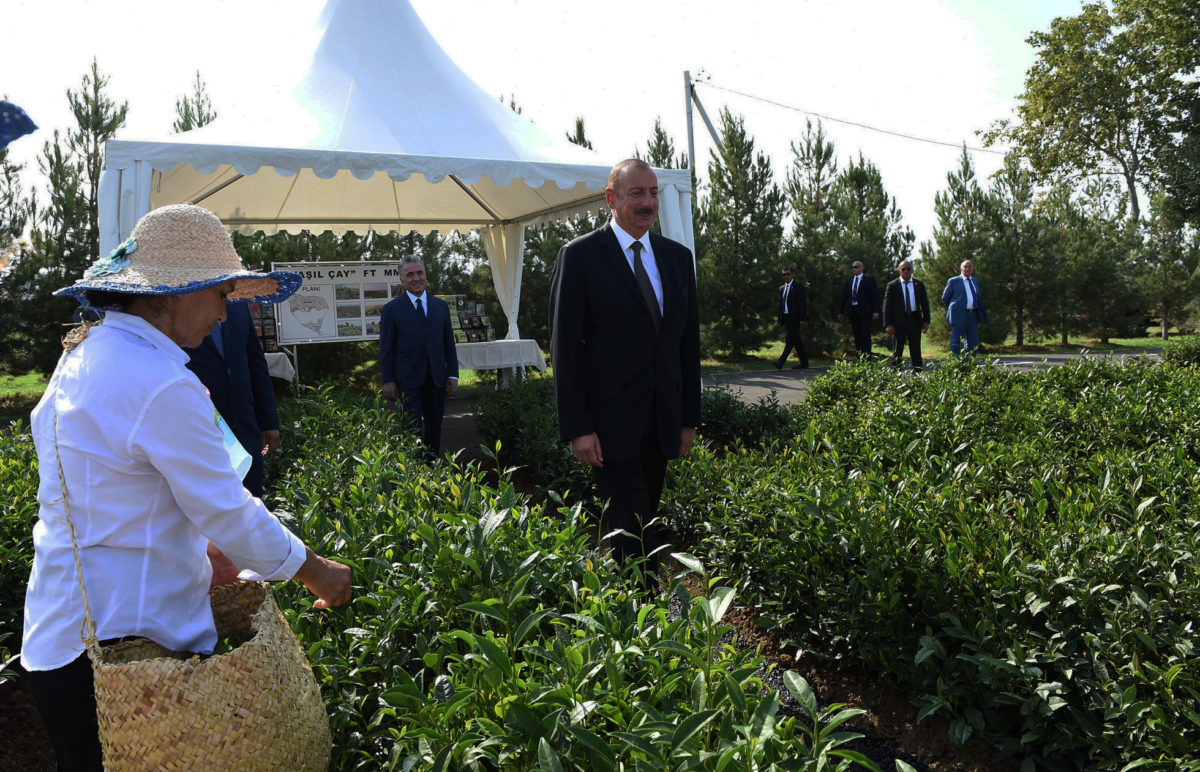
Azerbaijan did not vote in the United Nations General Assembly against the Ukraine invasion, hinting at neutrality. So there is no direct impact on trade and supply chain network. But the Russia-Ukraine war is likely to deteriorate, descending Azerçay export to Russia in a riffling effect. Ramaz Chanturia, Director General of the Russian Association of Tea and coffee producers “Roschaikofe,” claimed recently: “Prices for the imported tea to Russia are seriously dependent on the dollar exchange rate, and therefore, soon, purchase prices for stores may increase in proportion to its change.”
On another side of the coin, local consumers’ purchasing power to buy highly-priced quality Azerçay declines to some extent due to the currency devaluation and growing food prices.
Also, due to the war situation, at the risk of losing their products and money, key tea producers began to demand 100% advance payment from Russian importers, and purchases for domestic companies have become even more expensive.
Before 2017, the Krasnodar tea factory has been producing Azerçay. This Russian analog is noticeably inferior to the original Azerçay. Accordingly, it displays a reasonable price. This factor has contributed to the drop in exports of Azerçay, especially during the Covid-19 pandemic and lockdown.
Azerçay from the Sun Tea factory of Azersun Holding has become one of the premium tea brands in the Russian market and is exported to more than 40 countries. The factory has an annual production capacity of 15,000 tons. Tea routed to Russia usually goes by road and rail via Yalama and Samur ports. The truck transport rate from Baku to Moscow starts from 210,000 rubles ($2,330) per ton of tea.
Turkey is an emerging export market. Though Azerbaijani tea is currently presented in relatively small quantities, it is highly valued for its quality and sells well. Since March 2021, Azerbaijani tea growers have significantly increased supplies to the Turkish market since the intergovernmental agreement on preferential trade between Azerbaijan and Turkey came into force. And tea received the most favorable conditions – completely exempt from customs duties.
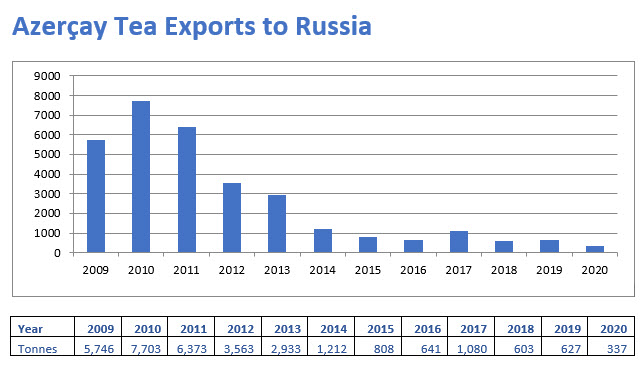
Challenges and prospects
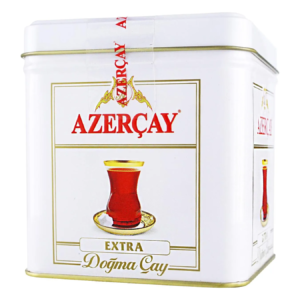 A lot of tea is sold in the domestic market, but 95% is not Azerbaijani tea. The tea comes from India, and Ceylon and blenders only pack and distribute the tea. Nowadays, the most profitable business model for entrepreneurs is to buy low-quality tea from abroad, pack it in Azerbaijan and sell it as top-grade tea. Some is blended with local tea for sale in the domestic market, and some teas are exported.
A lot of tea is sold in the domestic market, but 95% is not Azerbaijani tea. The tea comes from India, and Ceylon and blenders only pack and distribute the tea. Nowadays, the most profitable business model for entrepreneurs is to buy low-quality tea from abroad, pack it in Azerbaijan and sell it as top-grade tea. Some is blended with local tea for sale in the domestic market, and some teas are exported.
Domestic growers provide about 5-10% of the demand for tea in the domestic market with raw materials.
“In our tea regions, weather conditions are more changeable and unstable. Therefore, a significant expenditure of effort and money is required, which also often negatively affects the harvest, explained Firdovsi Fikretzade, Director of the Agricultural Research Center of the Ministry of Agriculture.
According to him, it is unprofitable to export as the cost of producing Azerbaijani tea is much higher than imports. Azerbaijani tea is a product of the highest quality. So, it turns out that despite the main advantage of our product – excellent taste – the volume of its export is very small.
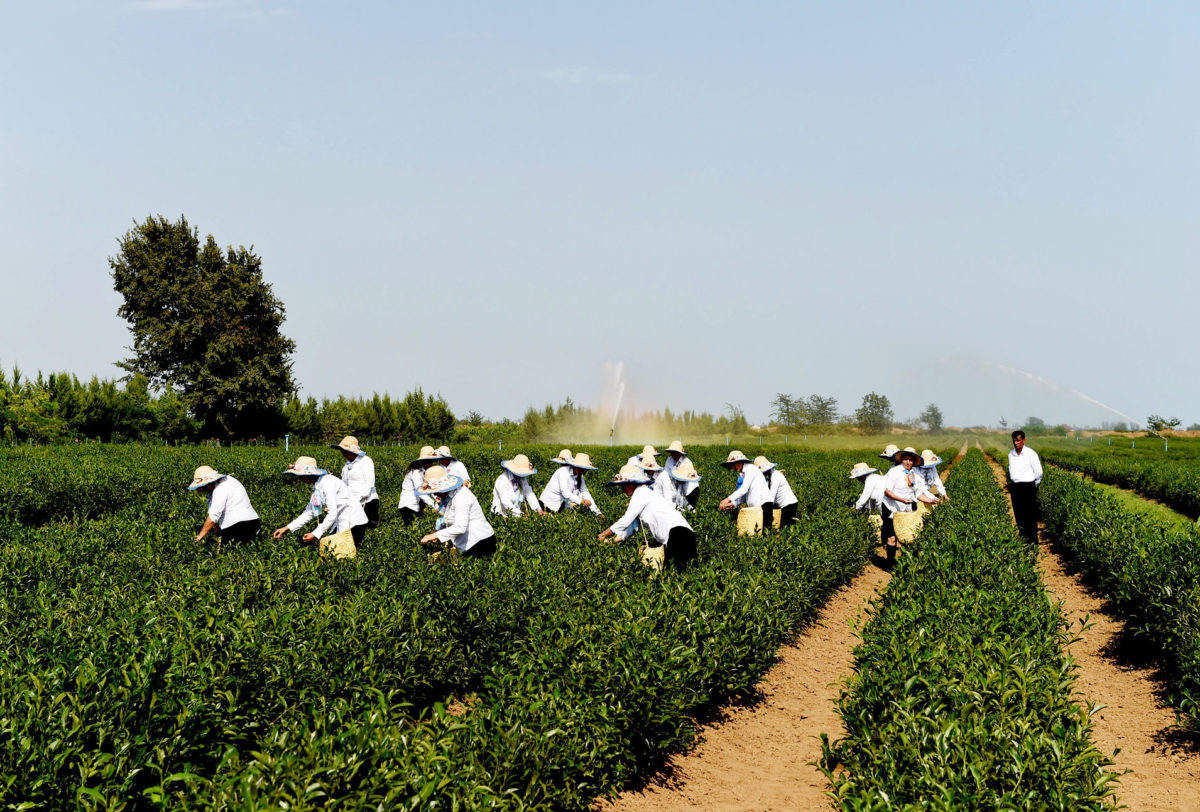
Owner Araz Yaqubov of the Yaşılçay (Green tea) farm in the Istisu settlement of the Lankaran region, said that his tea plantations cover 70 hectares. The pandemic caused him considerable damage – sales turned out to be minor, and at the same time, the cost of growing crops increased. But farmers are nevertheless trying to keep prices stable so that the level of trade does not fall entirely.
Depending on the variety and quality, the price of local tea in the domestic market ranges from $4.7 to $29 (8-50 manats) per kilogram. Recently, farmers say, the demand for higher quality has increased markedly. People already know that local products are of better quality, and therefore they are willing to buy our tea, despite the apparent high cost. However, you won’t go far in retail trade, and only farmers who have, albeit a small, but their processing enterprise, can afford it, added Yaqubov.
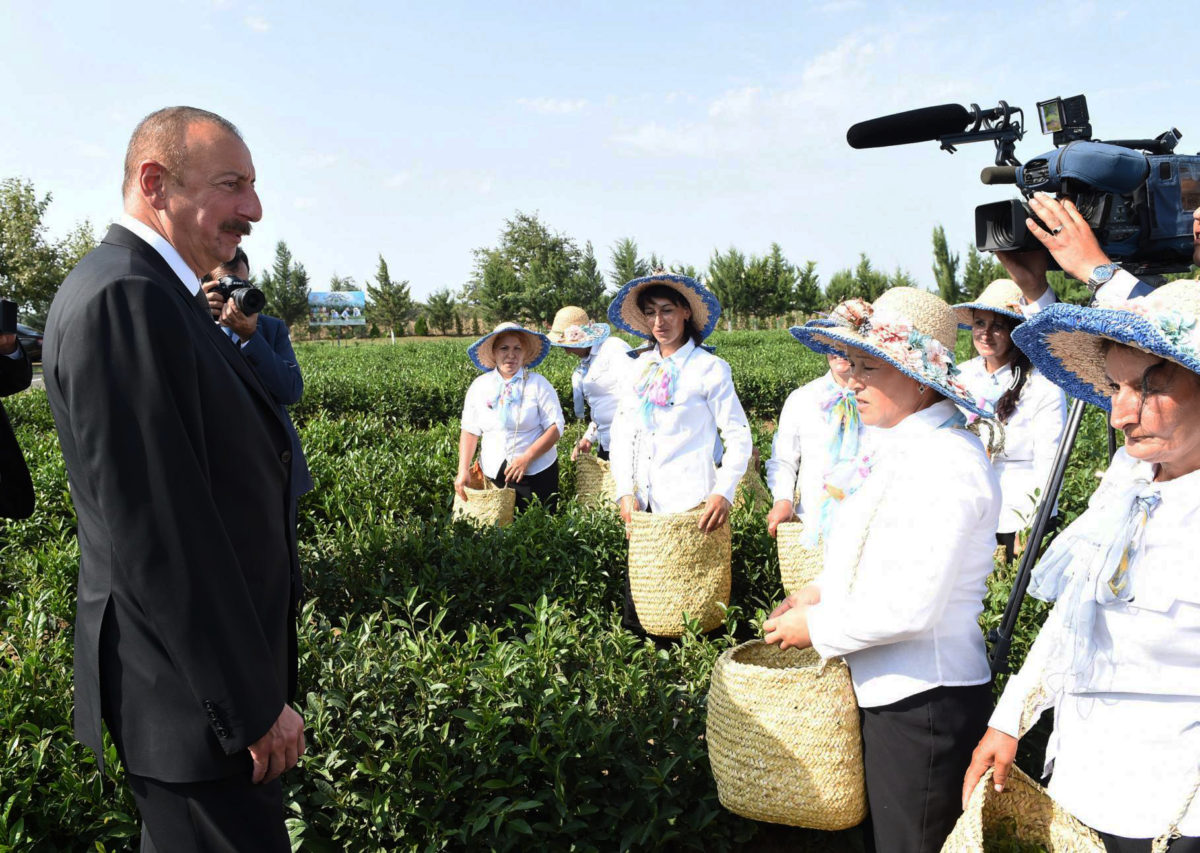
Azerbaijan’s Progressive Agricultural Insurance Policies
Last year, preferential insurance for tea plantations started in Azerbaijan through the state-supported agrarian insurance mechanism. According to the Agrarian Insurance Fund, farmers and business people can already apply for insurance for tea plantations.
When insuring tea plantations, productivity, price, and location are considered. According to the rules, productivity norms are applied to calculate yield and the price of one hectare under tea. The yield per hectare of tea is between 3.5 and 125 quintals (a quintal is equal to 100 kilos), making the price between $30 and $88 per quintal.
The insurance has two packages. The first one is for fire, earthquake, landslide, hurricane, storm, and guarantees of risks of actions of third parties. The second one is for plant diseases and pests and ensures the risk of spreading and attacking particular dangerous pests.
The insurance premium rate depends on each region. The highest insurance tariffs are in Ganja-Gazakh and Sheki-Zagatala economic regions, and the lowest insurance tariffs are in Guba-Khachmaz, Lankaran, and Absheron. For Lankaran, it is 0.60% and 2%, respectively.
For example, the Lankan sown area is four hectares with an expected yield of 40 quintals per hectare when the market price of one quintal of product is 50 manat. Insurance fee = 8,000 manat X 0.60% = 48 manat. The Government pays 50% of the insurance premium, and the farmer pays the rest. As a result, farmers pay only 24 manats or only 6 manats per hectare to ensure a product worth 2,000 manats.
Selling to the large factories at $5 per kilo often results in a loss. The sum barely covers our costs for growing products. When they process it ourselves, they get revenue of $18-30 per kilogram. If the factories paid the same way, they would not have the troubles, and the goods would not be stale in the warehouse.
At the same time, farmers note the last 2-3 years have been generally difficult for tea growing. Climate change is happening worldwide, and it has also affected the subtropical zone of Azerbaijan, the original place of tea cultivation. For this crop, the relative humidity in summer should be 60-80%, and for several seasons in a row, it has not exceeded 30%, leading to a drop in yield.
Depending on weather conditions, between $5,900 and $8,800 are spent per hectare. If it is windy, snowy, and frosty, farmers have to spend more to protect the bushes. When bad weather affects the yield, they have to sell a kilogram of tea for no less than $9 to cover the loss.
The Government has been providing significant support to tea growers in recent years – providing subsidies, and supplying fertilizers with a 70% discount. The subsidy of $411 to farmers per hectare of tea plantations has created additional incentives for tea growers. As a result, tea plantations in the region were expanded to 641 hectares. Of this, 483 hectares are new tea plantations planted in recent years. Plus, measures are being taken to provide water to tea harvesters.
Collected tea leaves are processed in the farm’s mini tea factory to produce an excellent dry tea called “Premium Gold,” prepared for overseas markets. The farm collects tea leaves intensively every day from May to September. These tea leaves are collected at 6 a.m. and processed by special technology. Tea cultivation there, mainly with Japanese technology, positively affects productivity. About 100 residents work at the Green Tea farm.
As part of the said State Program, the projects to increase the area of tea plantations on the farm to 120 hectares by 2027, the tea business also plays an essential role in developing agro-tourism. In the first half of 2021, Green Tea has received more than 3,000 tourists, more than half of whom were foreign guests.
From May 1, along with the “Green Tea” farm, national companies such as “Astara Tea” LLC, “Beta” LLC, “Farman Tea” LLC, “Tuado Tea” LLC, “Gilan Orchards” LLC, and “Ayna” LLC of Lankaran will harvest leaves.
Some of the country’s tea facilities are equipped with tea processing and production machinery sourced from specialist manufacturers in China, Greece, Taiwan, and Turkey. The imported machinery and equipment for tea processing are not subject to customs and value-added tax. In recent years, many investments have been made in this area, and it is gradually developing, but time is needed.
Although it remains traditionally popular in the country, black tea is gradually being replaced by other types, particularly fruit teas. So it is necessary to conduct research and study the market to understand how the tastes of tea consumers are changing and in which direction to move.